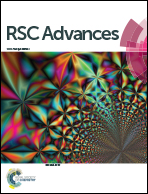Synthesis of novel ammonium vanadium bronze (NH4)0.6V2O5 and its application in Li-ion battery
Abstract
A novel ammonium vanadium bronze (NH4)0.6V2O5 has been successfully synthesized via a simple hydrothermal treatment and its electrochemical performance is investigated. The as-synthesized material was characterized by X-ray diffraction (XRD), scanning electron microscopy (SEM), transmission electron microscopy (TEM), Fourier transform infrared (FTIR) spectrum, Raman spectrum, X-ray photoelectron spectroscopy (XPS), element analysis (EA), cyclic voltammetry (CV) and galvanostatic charge/discharge cycling test. The results revealed that a pure novel phase (NH4)0.6V2O5 was obtained with square brick-like morphology. Preparation conditions such as amount of reducing agent, temperature and reaction time have been investigated to obtain the pure phase. (NH4)0.6V2O5 square bricks are tested as a cathode material for lithium-ion batteries. It has an excellent lithium ion insertion/extraction ability with a high specific discharge capacity of 280.2 mA h g−1 and 244.3 mA h g−1 during 1.0–3.8 V at the current densities of 10 mA g−1 and 20 mA g−1, respectively.


 Please wait while we load your content...
Please wait while we load your content...